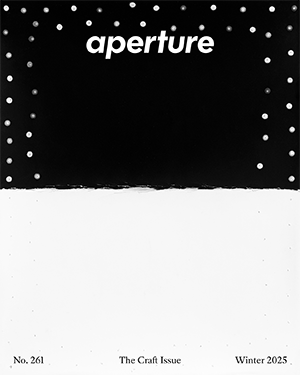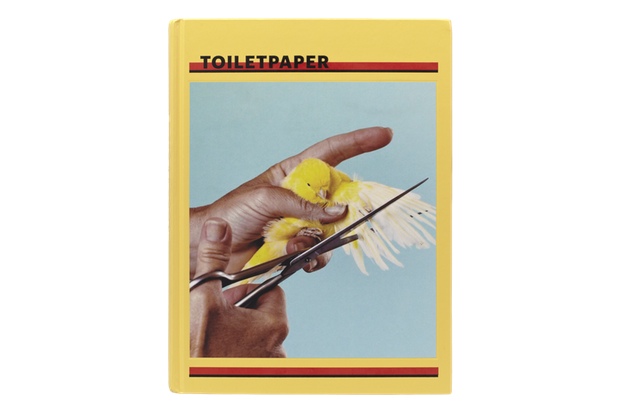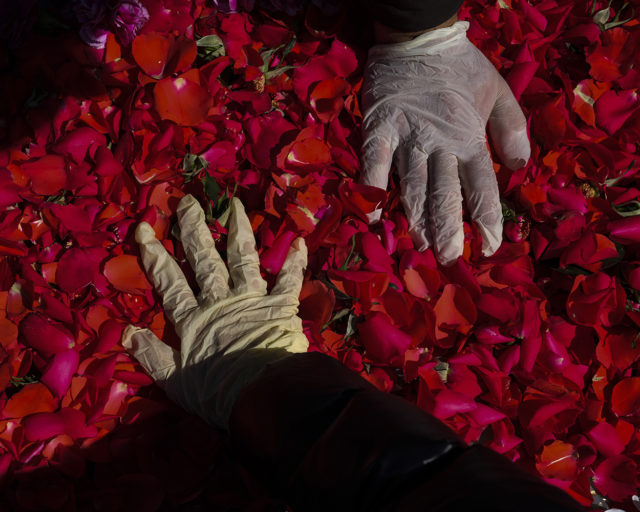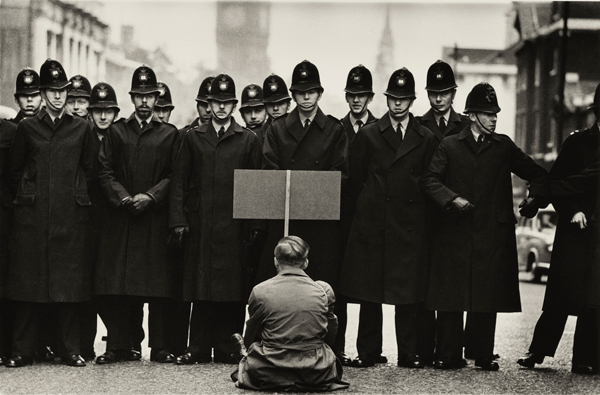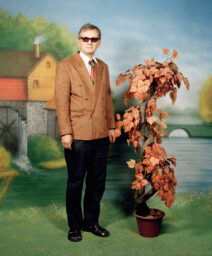Maurizio Cattelan: Toilet Paper
Maurizio Cattelan
Toilet Paper
Freedman Damiani
Bologna, Italy, 2012
Designed by An Art Service
13 ¾ x 9 ½ in. (34.9 x 24.1 cm)
220 pages
Hardcover
damianieditore.com
During a week marked by a distinct sense of absurdity—St. Peter’s Basilica was struck by lightning just hours after Pope Benedict announced his resignation; a ten- thousand-ton meteor crashed into the Ural Mountains—it seems fitting to have been asked to consider Toilet Paper, Maurizio Cattelan’s recent book. I first encountered Cattelan’s work in 2000, during a visit to the exhibition Apocalypse at London’s Royal Academy, which featured his La Nona Ora—a life-size waxwork sculpture depicting Pope John Paul II on a plush red carpet, crushed by a meteorite and surrounded by sparkling shards of broken glass. I remember finding the work itself strangely captivating, mostly due to the physicality of the installation and the life- like quality of the effigy. But it’s interesting to note (as Frieze did at the time) that a photograph of La Nona Ora also served as the “PR image of choice” for Apocalypse. Of course, given its headline-grabbing content and the accompanying title of the show, this image was sure to attract publicity. Yet when flattened into two-dimensions and stuck onto posters and billboards, the sculpture was reduced to a tongue-in-cheek visual one-liner, seemingly more suited to a T-shirt or skate graphic than a resonant work of art.
In recent years, Cattelan has announced his “retirement from making art” and has instead concentrated his efforts on being co-image-maker and coeditor of Toilet Paper—a text-free biannual that he cofounded with photographer Pierpaolo Ferrari in 2010. The magazine contains only full-page photographic spreads that mimic the high-gloss, high-key, highly saturated aesthetic of “commercial” photography while aiming to both subvert and harness it for other means. As Cattelan has explained it, “I hope some of these images can sustain more than thirty seconds of attention—most images can only sustain around ten seconds.”

Maurizio Cattelan: Toilet Paper
Toilet Paper presents the first five issues of the magazine in hardback monograph form, interspersed—for the first time—with a selection of quizzical texts that have been cleverly sourced by James Hoff, including a 1919 New York Times article entitled “12 Killed When Tank of Molasses Explodes,” the 1995 United States Patent for the Braille Slot Machine, and E. T. Hoffman’s short story “The Sandman” (central to Freud’s essay “The Uncanny”). The texts are frenetically captivating, and some of the images are successful in sustaining one’s attention for longer than expected, such as one photograph in which a light bulb is caught mid-explosion, having just triggered a mousetrap, or the book’s wince-inducing cover image, which depicts a bright-yellow canary, against a blue-sky studio backdrop, about to have its out-spread wing clipped.
Yet Cattelan’s puerile urge to provoke, particularly by emphasizing without ambiguity the attention-seeker’s favorite themes of sex and violence, often come across as self-conscious rather than subconscious—more “Like, so surreal,” in a pubescent sense, than genuinely Surrealist. (Labored references to oral sex and genitalia abound, predictably including phalluses made of sausages, cucumbers, cigarettes, and dildos.) Furthermore, one gets the distinct feeling that many of these works and the juxtapositions they present would, like La Nona Ora, be much more engaging if conveyed via mediums that invoke the third and fourth dimensions—perhaps as sculptures, installations, or films. In fact, as the magazine’s own website reveals, short videos made during several of the photographic shoots are far more effective.

Maurizio Cattelan: Toilet Paper
As a biannual magazine that contains nothing but imagery, each issue of Toilet Paper offers a regular, mischievous, and somewhat cathartic alternative to the high- fashion glossies that populate newsstands—a provocation to consider the visualization of both life and style within this specific context, from Cattelan’s unique perspective. But in book form, even with texts and hardcovers in place to help prop it up, it feels strangely flimsy, feeble and thin; in more than one way, it falls flat.
Aaron Schuman is a photographer, curator, and writer, and is the founding editor of the online photographic journal SeeSaw Magazine.
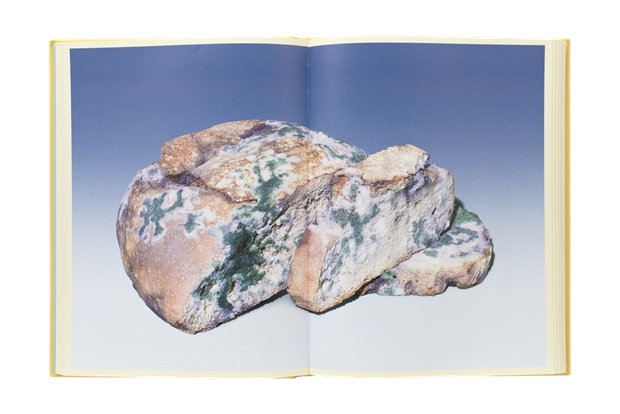
Maurizio Cattelan: Toilet Paper
